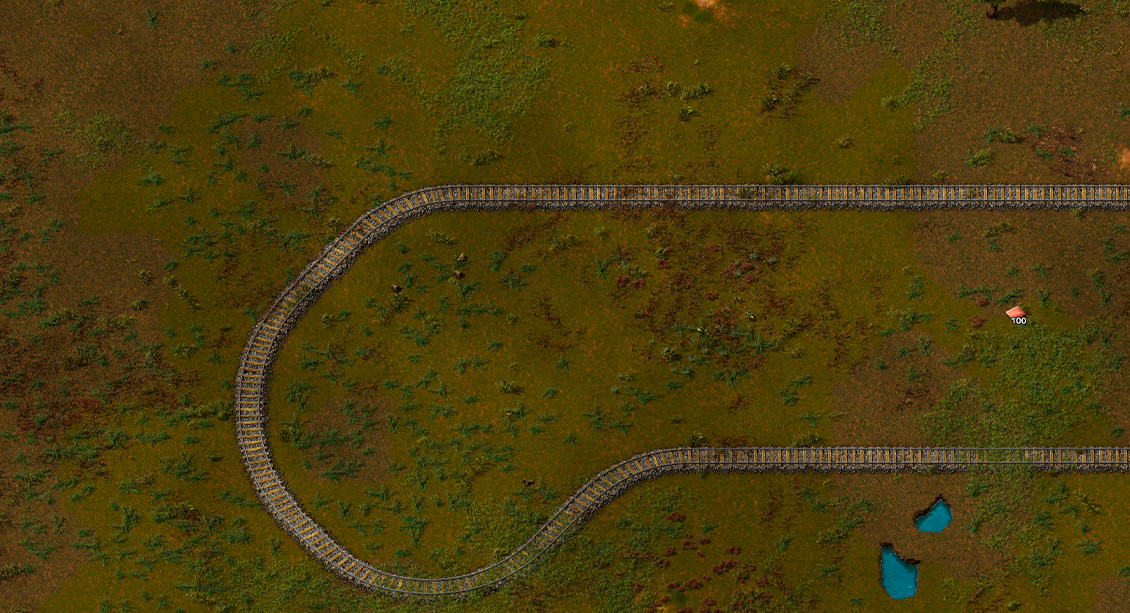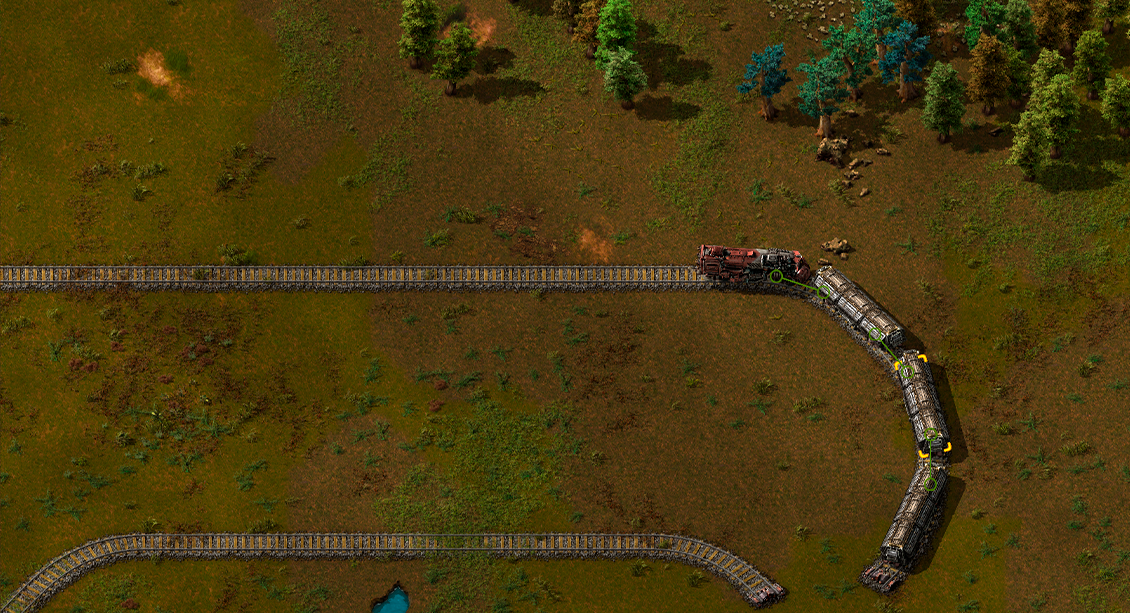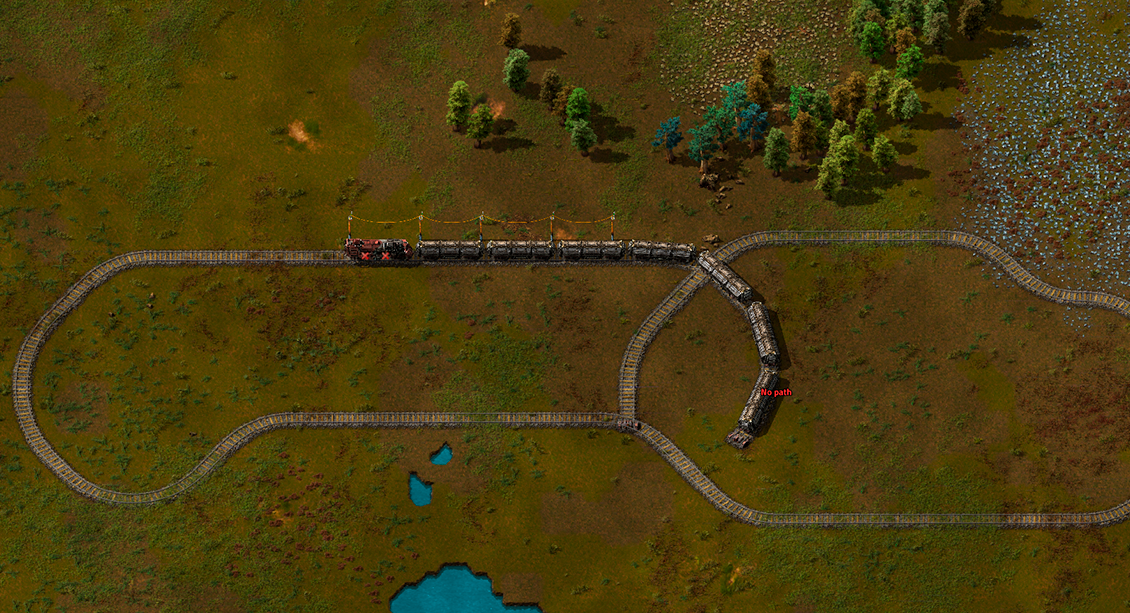How to Use Trains in Factorio

Make Your Own Factorio Server
Trains in Factorio are an integral part of the game, allowing the player to efficiently and speedily get resources and goods from one factory to the other. In this article, we will look at some tips and tricks to use trains to their maximum capability in Factorio.
But first, don’t forget to set up your Factorio server!
Building a Railway
For Factorio, tracks need to be laid before constructing a railway. The need is for two locomotives at both ends of the tracks, which can be either in a loop or straight. So, as for the fuel of movement, it will need coal or solid fuel, possibly to put in the inventory of the train to work effectively. The other variant might also be electrical locomotives, which might be more effective and ecologically friendly.Planning ahead and considering the terrain, barriers, and the material you will have to convey are important while making a railway. It will help increase the productivity of your factory, and a well-planned railway can ensure the conveyance of resources is prompt and effectively done.

Setting Up Rail Signals
For connection to be made for the two types of railroads, rail signals have to be placed. Far at the end on the right, where the train should be coming from, should be Rail Chain Signals while far at the end of the intersection should be Rail Signals. Rail signals ensure safe and fast crossing of the rail network by the trains without colliding to each other. Proper installation of the rail signals is quite important to assure the effective operation of the trains.The setting of the rail signals is important, where the traffic volume and the trains should be taken into consideration. Measuring the activity of the trains through the circuit networks will be useful and thus can help in setting the rails as well.
How to Drive Train in Factorio
You can manually control a train in Factorio by placing yourself near to it and hitting the "Enter" key. However, doing so raises your danger of running into autonomous trains on the same tracks.To avoid this, designate a special "service" track at each outpost where the service train is directed. Service trains can move items manually without interfering with the automated railway network, ensuring a safe and efficient train operation.
For certain duties or troubleshooting, manual train driving can be helpful, but it should be done carefully and cautiously to prevent any accidents or delays.

The Advantages of Trains
Based only on their fundamental numbers, trains are the fastest and most efficient delivery mode in Factorio, making them the ideal option for transporting resources across long distances.For example, express blue belts can only run 5.625 tiles per second and carry 40 items per second, while basic trains can move significantly faster and carry far more freight. Large-scale businesses require trains because they are an efficient and speedy way to move large amounts of cargo.
The ability to deliver resources to any location on the rail network is another benefit of trains. You can move resources about your factory fast and easily with the right arrangement, and you can make sure they get at their destination without delay.
The Flexibility of Trains
As an outpost runs out of resources, you can simply add more trains to enhance throughput. However, trains are more versatile than belts in this regard. It is difficult to construct and adapt 10 rows of express belts, but having double tracks everywhere makes it simpler.Trains may be quickly modified to fit the factory's production, guaranteeing that the materials are carried effectively and waste-free.
The capacity to scale up or down the number of trains as necessary is another benefit of trains. This can be helpful for expanding the rail network to new places or for altering the transport capacity dependent on the needs of the factory.

The Placement of Rail Signals
Rail signals have to be positioned to the right of a rail in order to effect it. This would mean that the player would have to set up a Rail Signal "in front" of a rail block. The affected rail block will be in front of the signal, facing the direction that the signal is pointing. Appropriate rail signal location can minimize delays and crashes and is necessary for efficient train operation.When configuring rail signals, considerations such as resource flow and train traffic are critical. Trains may traverse the rail network safely and efficiently by employing signals to create "blocks" of track. In order to indicate the condition of the block ahead and prevent trains from passing through a corded area
FAQ
Can trains be used to transport fluids?
You can move fluids by rail in Factorio. To do this, you'll need specialized tanker wagons that can hold and transport fluids. Pumps and pipes can be used to load and unload the fluids into the wagons. Transporting fluids via rail can be challenging and may require additional planning and preparation because of the fluid dynamics in the game.
Can I automate train schedules in Factorio?
Using train stations and circuit networks, you can automate train schedules in Factorio. Trains can be programmed to autonomously go between stations based on their schedules, and train stations can be configured to request and give specific goods or fluids. Circuit networks are able to monitor and manage railway traffic, enabling more automated and efficient train operation.
How Do I Prevent Train Collisions in Factorio?
You should carefully construct the rail network and set up rail signals to avoid train crashes in Factorio. Rail signals make guarantee that trains move across the rail network safely and quickly without colliding with one another. Correct rail signal installation is essential for effective train operation. Additionally, you should take into account the volume of traffic and the number of trains operating on the network. Use chain signals to signal the state of the block ahead and stop trains from entering crowded areas.
Final Thoughts
Trains in Factorio are an essential element, and with effective use of trains, you are able to upscale the productivity of your factory. This article will talk about some of the train setups in Factorio, such as ways of setting up the railway, where to place the rail signals, train driving manually, and the flexibility of the trains.They should give you ideas on how to get the material rolling fast through your factory with the least amount of hassle whilst keeping the trains efficiently moving. You might also consider automated transportation of materials via railway stations and employing circuit networks to monitor and control train traffic to continue optimizing your use of trains.
You can come up with a highly automated factory which produces a big quantity of resources fast and easily with the use of these cutting-edge strategies.
← How To Use Discharge Defense In Factorio
How To Make Electricity In Factorio →
Make Your Own Factorio Server
Copyright 2019-2025 © ScalaCube - All Rights Reserved.